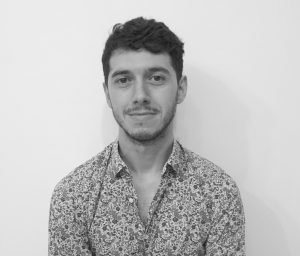Should I trust what I feel or should I trust what I am told to feel?
I remember precisely when I started to question the teaching I was receiving. Until my 4th year of studies, I must say that I was just learning whatever a teacher would tell me. After all, he had more experience than me, why would I even wonder if his teaching could be biased?
In France the 4th year has (or had, as I’m not sure how it is now since I graduated in 2010) an important place within the curriculum. That’s basically when you start treating real patients. Most osteopathic schools have a clinic that allows the public to be treated by students for a cheap price. In exchange, the student gets to work with “real” patients, instead of treating other students.
Of course, the young student isn’t left alone and the treatments take place under the watch of a fully trained osteopath.
Human bodies seen as machines
When it comes to learning how to treat a patient in osteopathy, you enter a very codified world. Welcoming the patient, getting a proper medical interview done, looking at your patient while he’s standing up, while he’s moving, getting some tests done to decide either you can treat the patient or if you need to refer the patient, then getting your osteopathic tests done in order to decide what you are going to treat, and finally treating the patient. Overall that’s how it goes, and in France, it has to take 45 minutes. I don’t know why not 30 mins or 1 hour, but it became the rule.
I remember that as I was treating that patient as if he was a machine, moving a bit the bones based on the knowledge taught by my teachers, I started to feel something. Something that wasn’t written in my notes. Something that wasn’t in line with how a machine should move. And therefore, something a student shouldn’t be feeling, and if he does he should consider that he is wrong.

A young fool
Following my instinct, I decided to follow that movement and for once not to tell the tissues what they should do, but to let them guide me.
I did that for a few minutes until the area of the patient started to get a bit warmer and less tensed. I finished my treatment in a very classic way, walked the patient back to the secretary and finally went back to the examination room to talk with the osteopaths.
Troubles ahead: Trust what you are told only
This is not what you’ve been taught, do not try to invent techniques.
That’s what the older osteopaths told me. Do not try to invent techniques, follow the rules, older osteopaths are telling you what you should feel, and they’ve been told by older osteopaths, so follow the rules.
I know for sure that I’m not the only osteopath who struggled with that issue. Being told that according to the rules of biomecanic a bone is supposed to move in a specific direction and that anything else is wrong is something that actually occured to many osteopaths.
That subject is so vast that I can’t even start talking about it here. But it is a strong proof of how little those senior osteopaths knew about the cognitive aspect of touch, about actual biomecanic and about pain science. No mentionning the fact that AT. Still, the discoverer of osteopathy actually never wrote a book of techniques. We’ll save all that for later.
But that’s not the reason why I was in trouble. Troubles were coming for me as I started to question what I was told and what I was doing. I started to be a blasfemur.
Trust thyself
Years later, I remember reading Ralph Waldo Emerson “Self Reliance”. A brilliant essay about being anticonformist and how one should trust its inner voice.
We all have different ways to interact with the world, to feel it, to be moved by it. Yours is not any less good than mine. Trust thyself. Teaching people how to listen to their inner voice is what I do by teaching meditation.


About Jules Rampal
Meditation teacher and osteopathI am an online meditation teacher and an osteopath currently working in Gordes, France. My courses are for people who want to learn meditation with guided sessions, and for therapists who want to delve into the way they feel and the knowledge they can gather for their clients.
Book an osteopathic session here
Learn more about me here
Leave a Reply